Indeed Laboratories are a relatively new brand in Australia. They’re known for making refreshingly simple skincare products that feature one star ingredient, and there’s been a lot of hype around their products. I’m a big fan of layering my skincare, so I was very excited to try Indeed Laboratories Hydraluron.
Hydraluron is probably Indeed’s best known product. It’s a serum that features hyaluronic acid as its key ingredient. Hyaluronic acid is a humectant moisturiser that sits on the surface of the skin and holds onto water much like a sponge, keeping your skin hydrated.
Hydraluron ingredients: Water/Aqua/Eau, Propanediol, Sodium Hyaluronate, Ahnfeltia Concinna Extract, Carbomer, Butylene Glycol, Disodium EDTA, Sodium Hydroxide, Phenoxyethanol.
The ingredients list is simple. The hyaluronic acid used in Hydraluron is advertised as being free of animal-derived raw materials and organic solvent remnants. There’s also Ahnfeltia Concinna Extract, a red algae extract, which is advertised to “cause controlled and mild stimulation of skin turnover to allow thorough penetration” of the hyaluronic acid. I can’t find any reliable references on the action of red algae extract though, so I’m not sure how this works, but it should have some antioxidant effect too. There’s not much in Hydraluron to provide long-term moisture, so it’s best used under a moisturiser that has occlusive properties to keep the moisture trapped over time (i.e. most moisturisers). This definitely won’t work well on its own, and it’s not designed to.
Marketing
Now the marketing…here’s where I get all critical. The packaging contains a bunch of sneaky tricks from the “misleading science” book.
- False equivalence – The packaging firstly talks about how hyaluronic acid is used as an injectable in Swiss clinics, which sounds great but injectable hyaluronic acid is so different to hyaluronic acid creams, it’s like saying that rubbing a silicone phone case on your boobs will make them bigger because silicone’s in breath implants. (Of course, they’re careful not to say that it has anything to do with the cream, but it’s right there on the packaging, so the implication is obvious.)

- Graph scale shenanigans – There are two graphs on the packaging, which show that hyaluronic acid is amazing. I mean, look at the size of that column! Look at the giant spike! Hyaluronic acid is twice as good as the control!
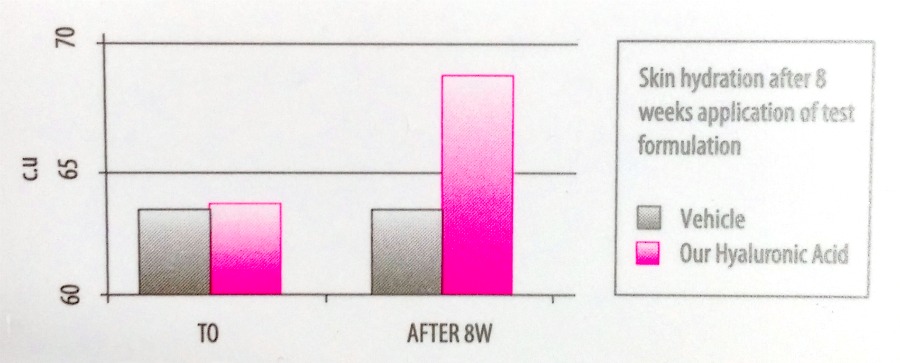
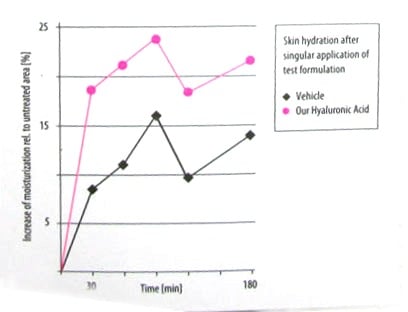
I replotted graph 1 on a more realistic scale that starts at 0. Graph 2 starts at 0, but it’s about percentages, so I replotted it so it goes from 0-100%:
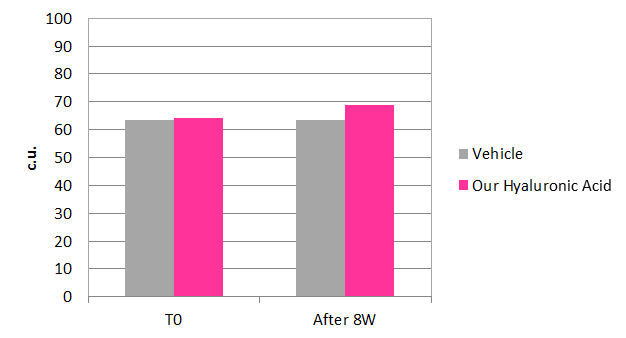
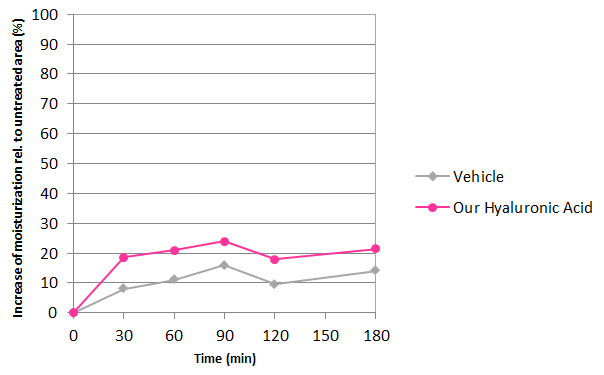
(They also have a bit of a boo-boo on the packaging – they’ve mixed up the meanings of in vivo and in vitro, saying that in vitro means performed on real people, but it’s an understandable mistake.)
How Hydraluron worked for me
I used Hydraluron under my regular moisturiser at night, and while I did find that my skin felt more hydrated the next day, I get better effects with glycerin. People with dry skin seem to rave more about hyaluronic acid than people with oily skin like me though. My hypothesis is that because hyaluronic acid is much larger in size than glycerin, so it has a hard time getting through the layer of oil on my skin, so it doesn’t hold water as closely to my skin as glycerin does. I do really like the simplicity of Hydraluron though – it’s a well-formulated, light-feeling gel that has very little in the way of potential irritants. If you’re looking for a way to boost moisture in your skin without changing your routine too much, this is a fantastic product; you might also want to try a glycerin spray (which can also be DIY’ed). If you’re looking for a one-step moisturiser, this isn’t the product for you.
I’ve also been trying out Indeed’s Retinol Reface, which works much better with my skin and my routine – I’ll be reviewing it soon!
This product was provided for editorial consideration, which did not affect my opinion. For more information, see Disclosure Policy.
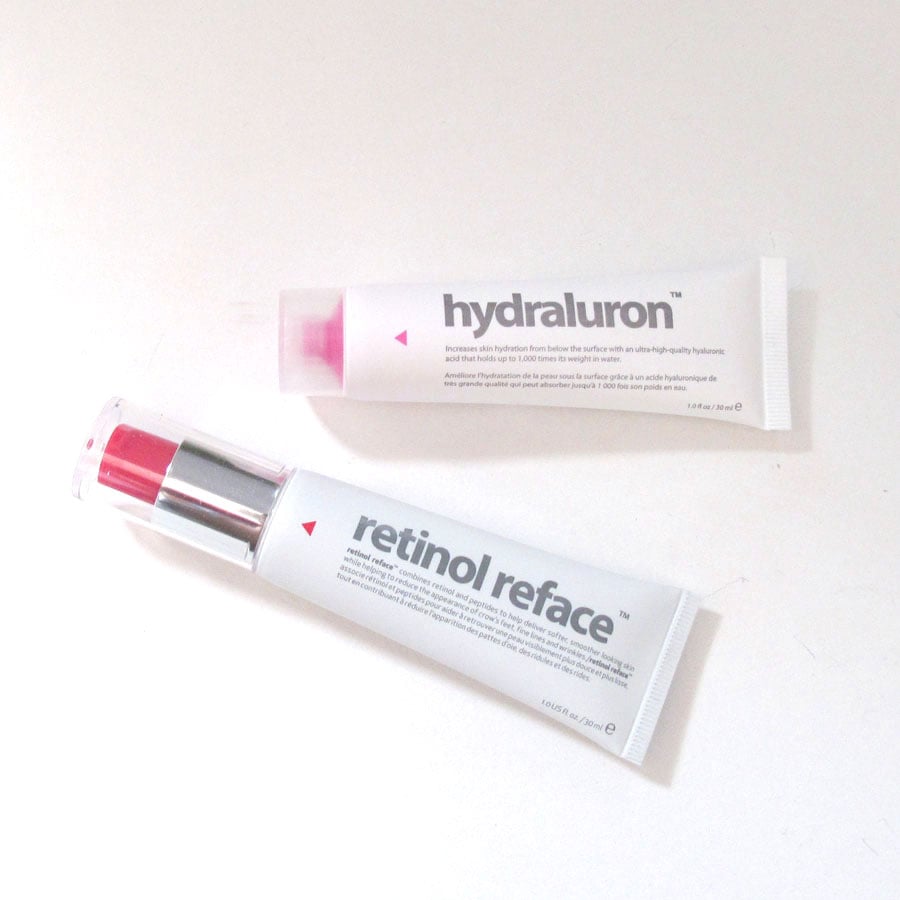
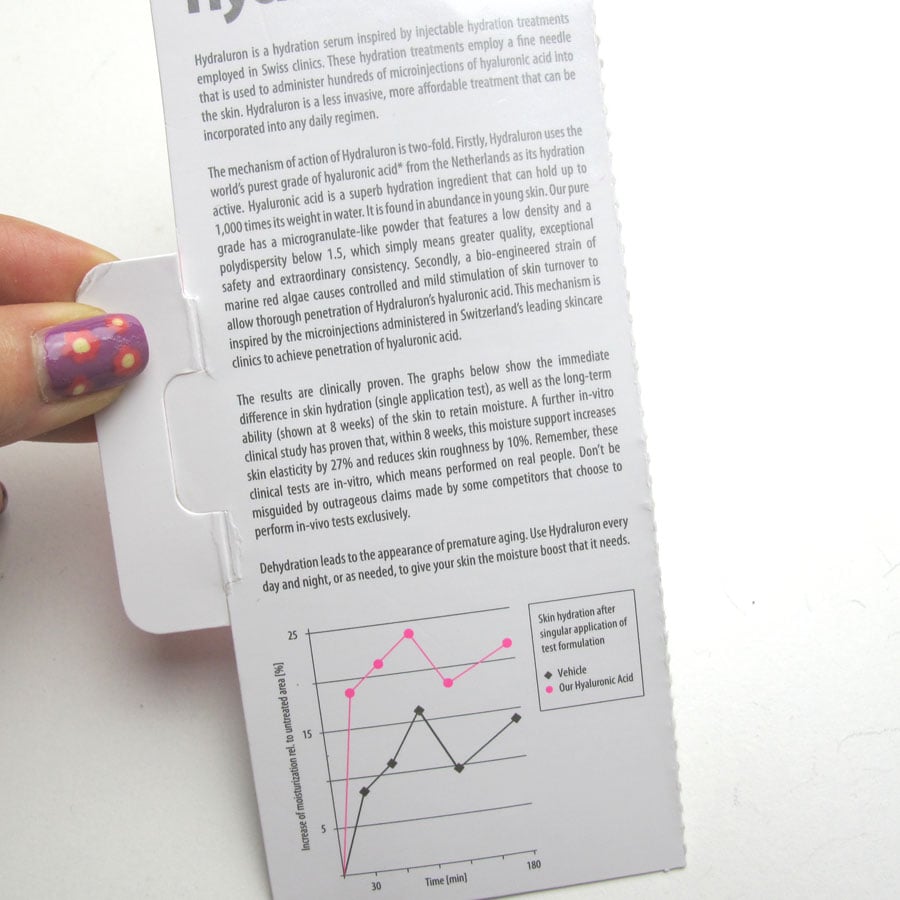


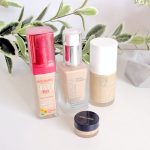
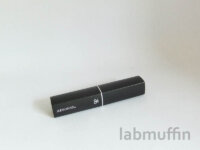


I love your re-graph, very interesting! I used two tubes of Hydraluron and found it fairly effective, but I haven’t kept using it because the silicone (I guess?) in it made my facial sunscreen ball up: messy makeup… grrr
It might be because it’s water-based, and perhaps your sunscreen is oil-based?
Thanks so much for a realistic review, much appreciated!
No problems! 🙂
Really loved this review! Thanks for breaking down their sneaky tricks. Shortening the axis is a pet-hate of mine, but it works well for marketing. I just started using a Retinol Serum from Skinstitute. I only use it every 3-4 days at night (just to start) since I’m scared my skin will freak out.
That’s a good idea, going slow with retinol! I went way too quickly with my first retinol product and it was peely as hell, my poor skin. Hope it works well for you!
Darn it.. *throws away all my silicone phone cases*
I’m on the hunt for a new serum since the one I tried recently is really freaking awesome, as well as awesomely expensive when compared to my budget, but it was a 1-step which I loved so I’ll cross this one off my list. I’ll keep watch for the Retinol Reface post.
I still don’t think I’ve got a favourite serum, I haven’t decided what I want in one yet! Maybe I’ll DIY one someday.
I have dehydrated skin, combination, so dry in some spots and really oily in others. I didn’t actually find this to be that hydrating. I used it every morning and every night under my moisturiser for a couple of months and I didn’t really see a difference in my skin. I have personally found the Deciem Hylamide products to be better. Interestingly enough, I had a small sample size of this as well and have been using it again recently to use it up, and now that the hydration of my skin has improved I found the Hydraluron to be way more effective.
Interesting! I wonder why it works better now? Maybe your improved skin allows it to sink in better. I haven’t tried any Deciem products yet but I’m intrigued!
Wow, I LOVE your science realness with skincare and even showing the GIANT SPIKE of lies! :p thank you!
Thank you!
I’m hesitant to call it a lie per se – it often makes sense to truncate the axes (e.g. if you have a graph of computer sales vs year, it makes no sense to start at year 0). But it’s definitely massaging the data!
I come for the science, I stay for the Always Sunny lols.
Love your nails 😉 that graph trick is so sneaky, i consider myself pretty savvy but if i think i might have been fooled by that! Have you ever noticed a difference between high and low molecular weight hyaluronic acid based gels?
http://www.honestyforyourskin.co.uk
I don’t think I’ve tried enough products to say for sure, but so far – not really!